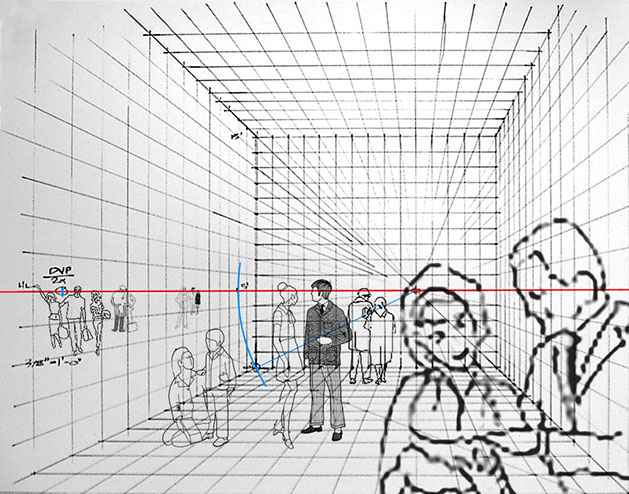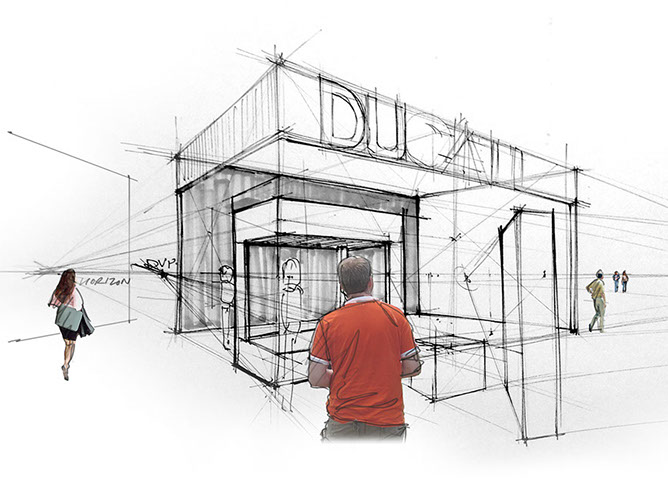
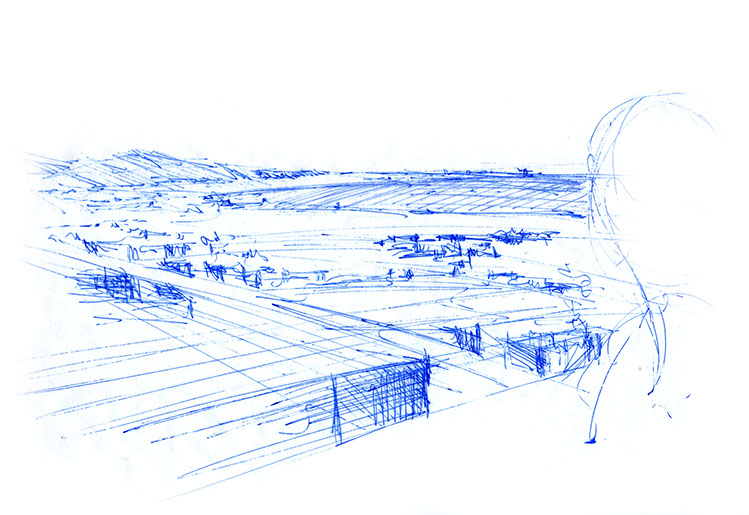
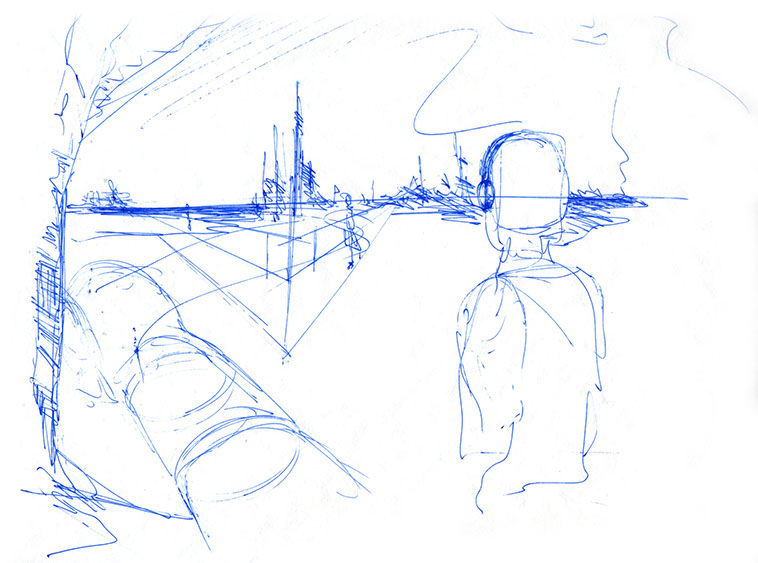
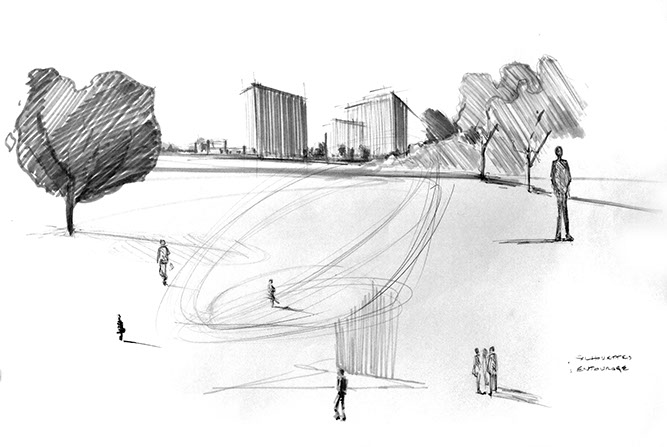
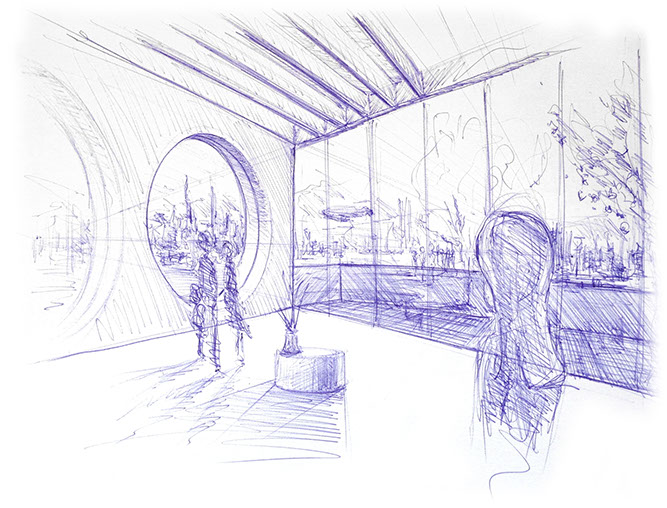
Notice the people or "entourage" have been set into the space where the average eye level is aligned through the HL. Notice that as the figures get smaller, they appear farther away, but the HL goes through their eyes. Some people are a little taller or shorter than 5', so it's ok if some heads are higher or lower, but keep the average. Notice a child will be shorter than the HL, likewise people sitting in this scene would have a head height of approximately 3'.
Strong understanding and adherence to the correct placement of your figures is critical for creating believable spaces.
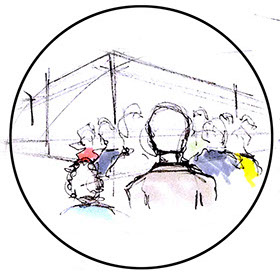
These rough sketches use a figure in the immediate foreground to help frame the scenes. If the view is approved, then a final rendering will be developed where the line work would be cleaned up.
When you want to create an highly active place, start in the foreground. Figures in the foreground will "mask" those farther away and you'll have less in the distance to draw.
This rough study for Ducati incorporates people using Photoshop along with the initial rough sketching. This technique will soften the look of the people as well as lend a level of refinement to your rough sketch.
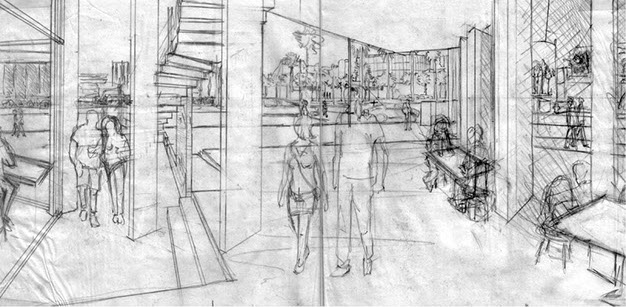
A trace paper rough sketch, later finished as a watercolor rendering.
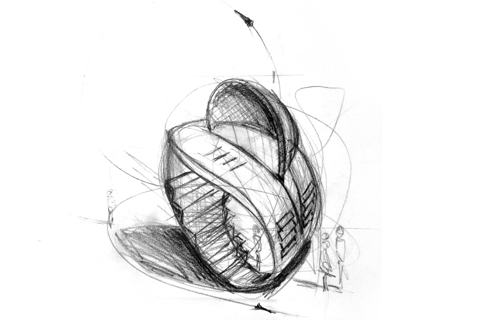
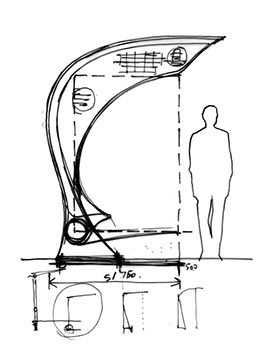
TORSO AND FULL FIGURE
Quick stylized figures are fine and convey personal character to your sketches. They can easily be replaced later in Photoshop with more refined entourage.

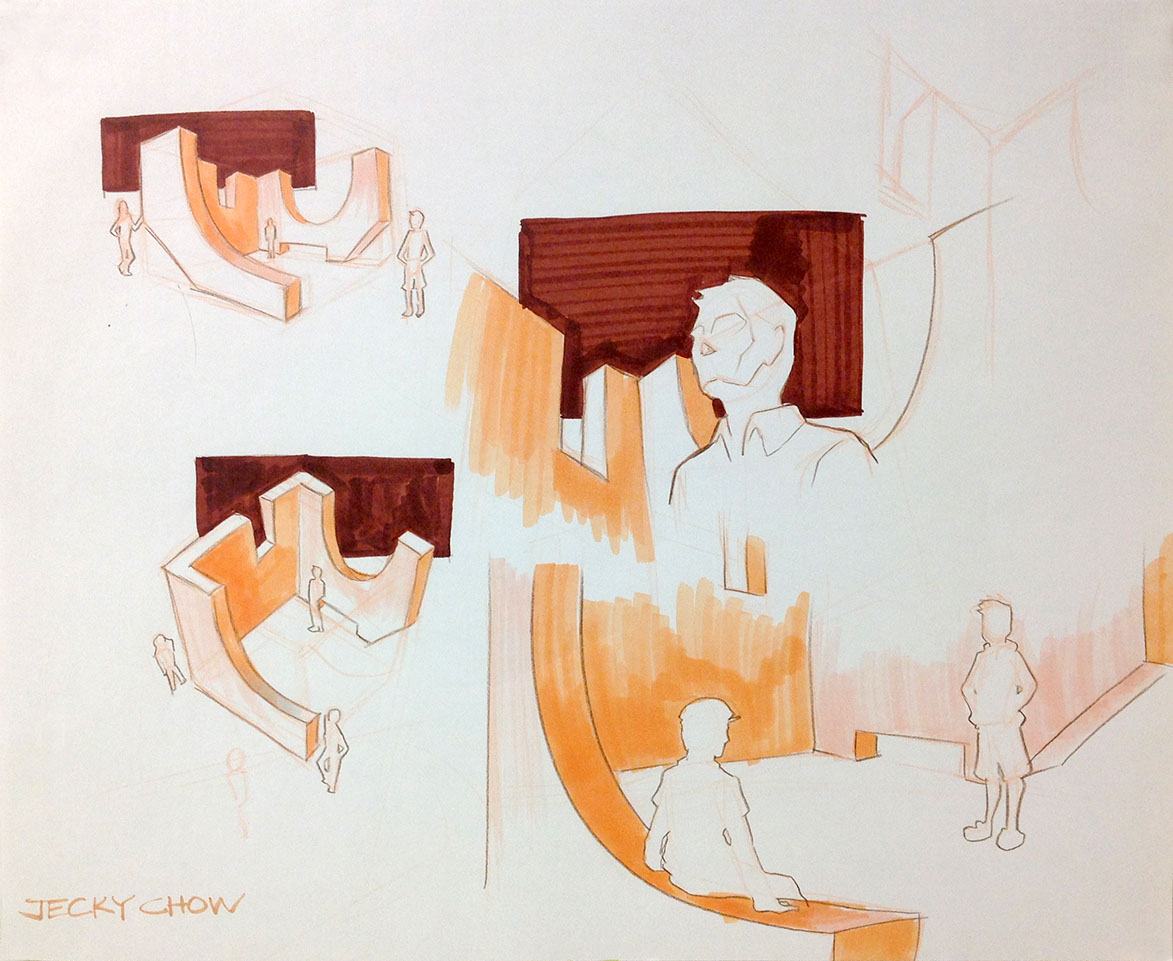
FOCUS
Two different techniques which allow the viewer to focus on the design, and not become overly distracted by the figure.
Simple ghosted figure technique
Simplified silhouetted figure technique
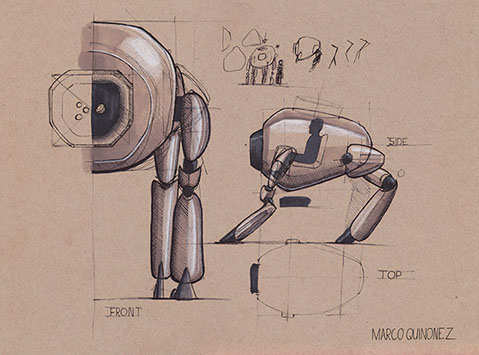
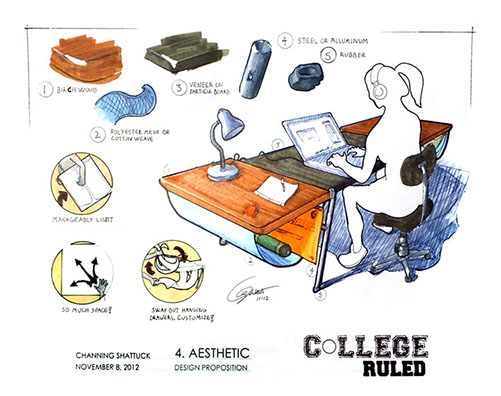
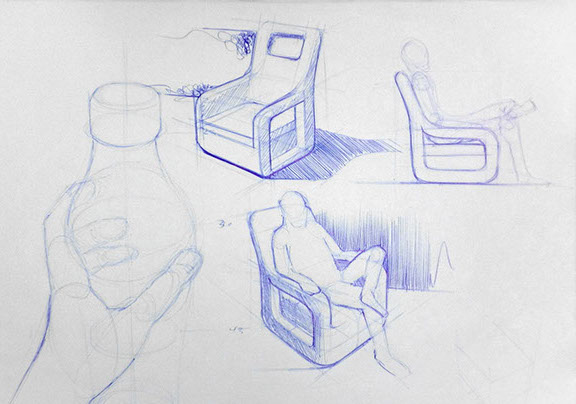
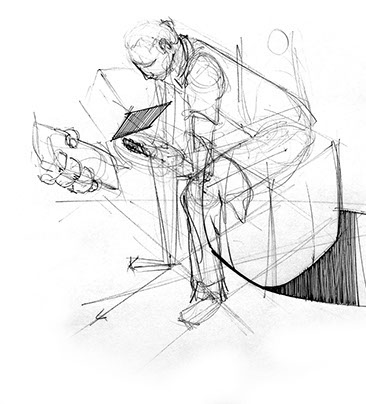
Your initial sketch may look like this as you work out proportions and/or viewpoint. When it comes to presentation, be sure to develop stronger line to "finalize" your figure.
ACTIVE, MOVEMENT
As you gain confidence it'll become easier to play with more active figures.
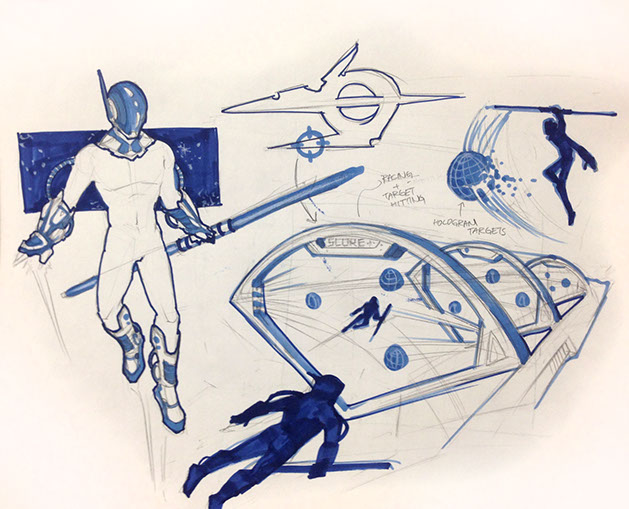
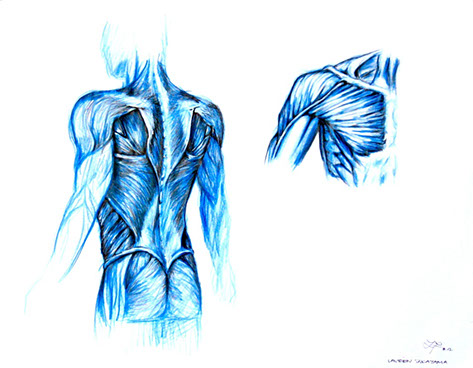
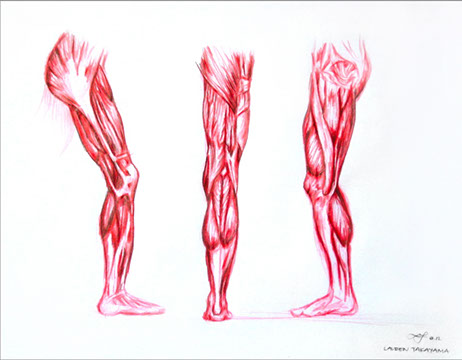
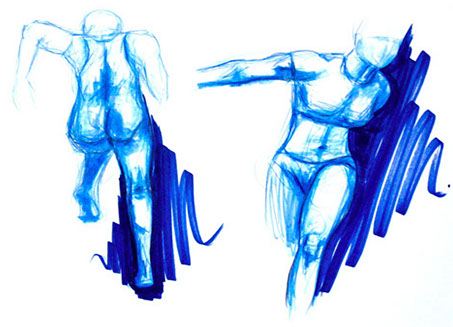
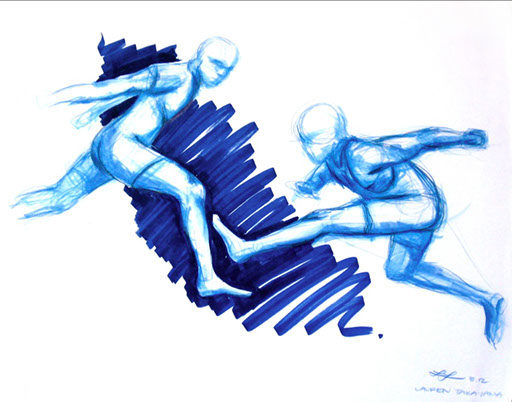
MUSCULATURE
Studying anatomy books and really understanding the body can have a huge impact on your design-thinking, especially with sports apparel and ergonomics.
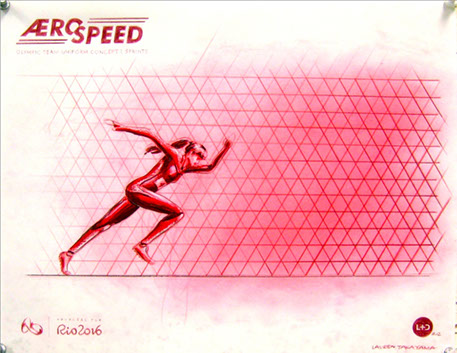
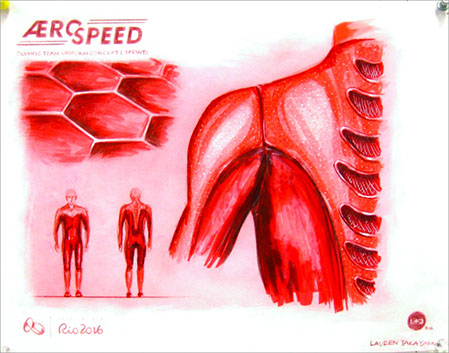
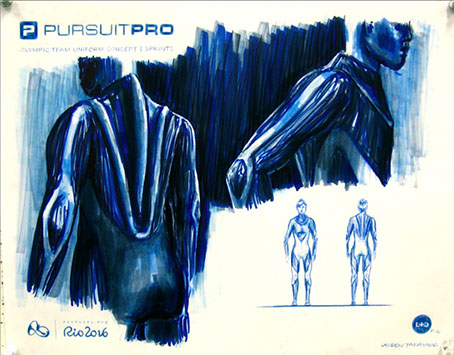
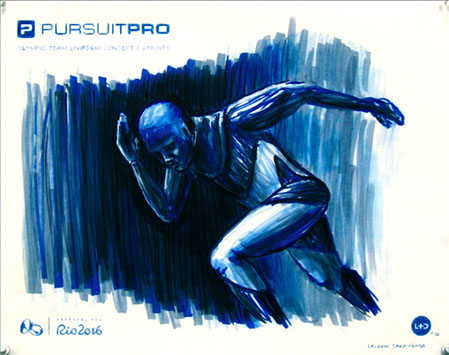
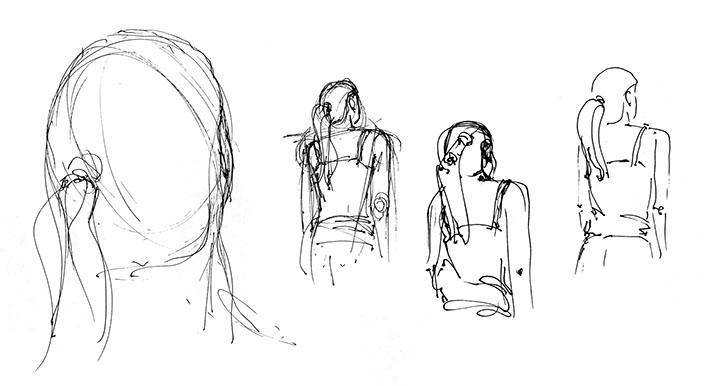
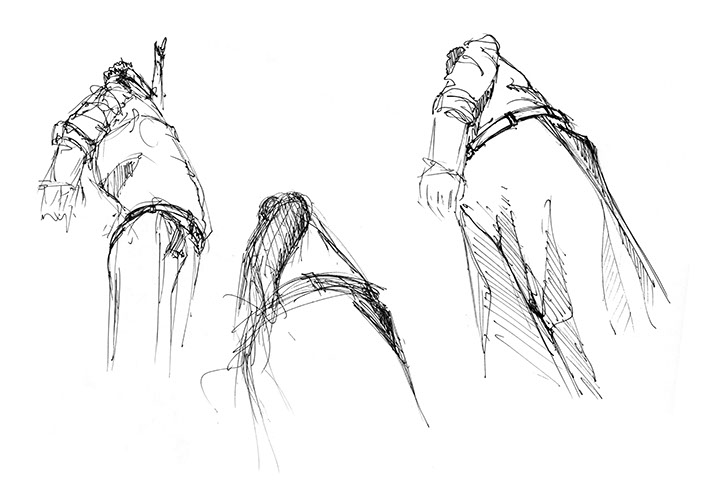
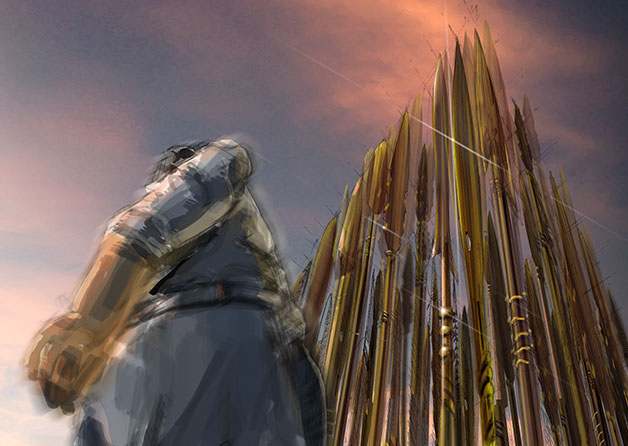
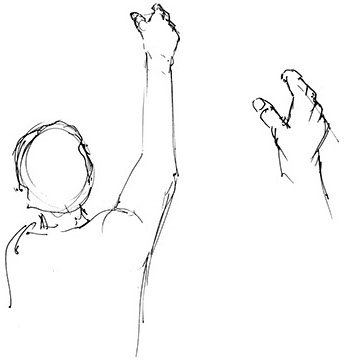
EXTREME VIEW POINTS
It's not every day that you'll need to draw a figure from such an extreme point of view and even with strong perspective knowledge, the foreshortening may still be difficult to trust. It can really help to simply take a photograph of a friend and do a tracing, capturing the major, important lines. Eliminate anything that looks odd, like the extended arm on the left, and you may need to reposition your model, by twisting the body, pulling an arm back, etc., whatever it takes for the representation of your figure to work.
This sketch was then used in the final Photoshop rendering below.
UNFAMILIAR VIEWPOINTS
Sometimes when trying to sketch
a figure in a pose you're unfamiliar with, your initial sketch may be very rough as you search out the stance, position, etc. As you start to feel
the right position, begin to distill or simplify your line work down to it's bare essence.
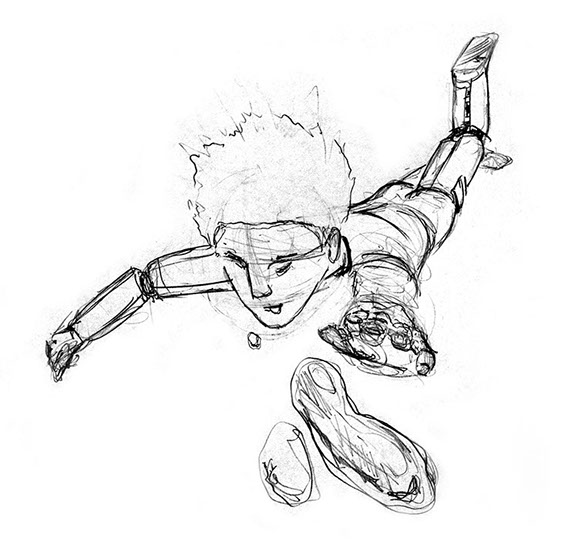
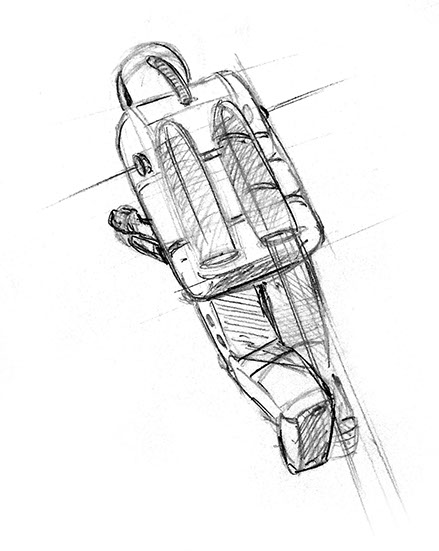
You may need to convey a weight-less environment at some point for a new form of entertainment, sport, or sports equipment.
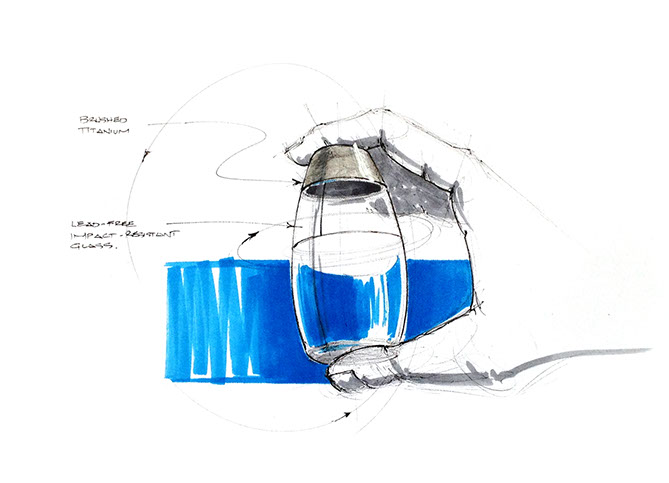
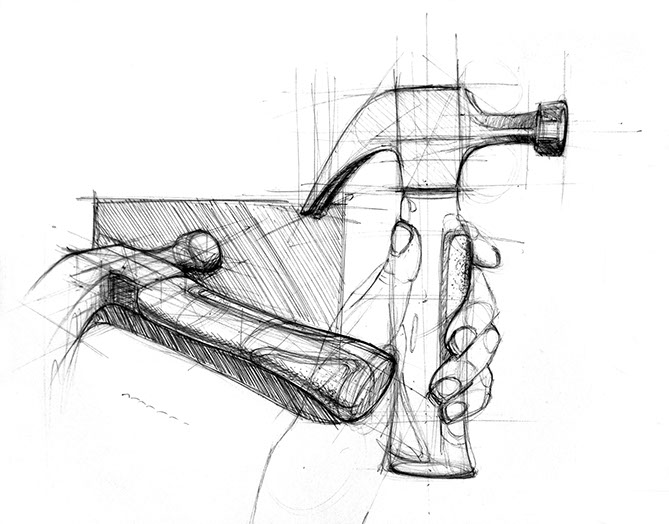
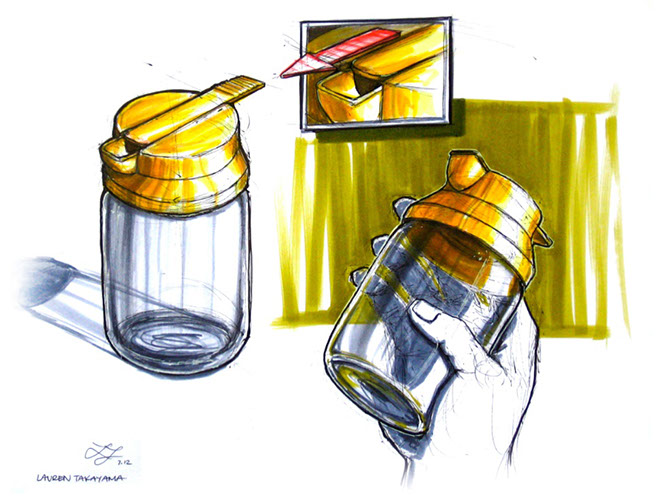
video by Mark Crilley on YouTube
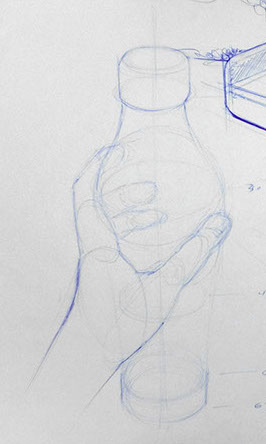
HANDS, FEET, DETAILS
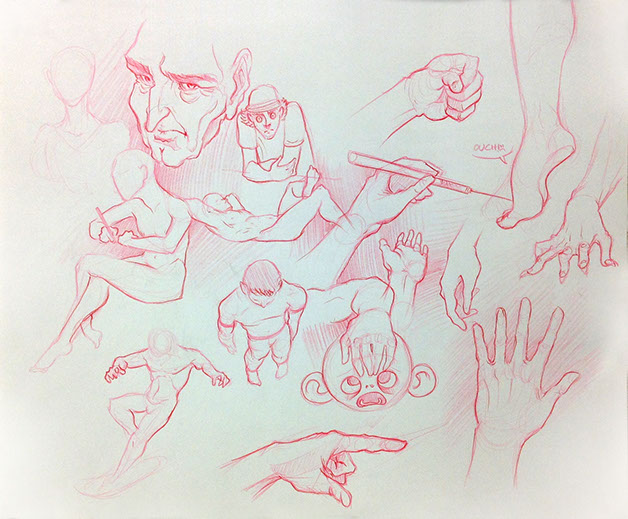
HEADS AND FACES
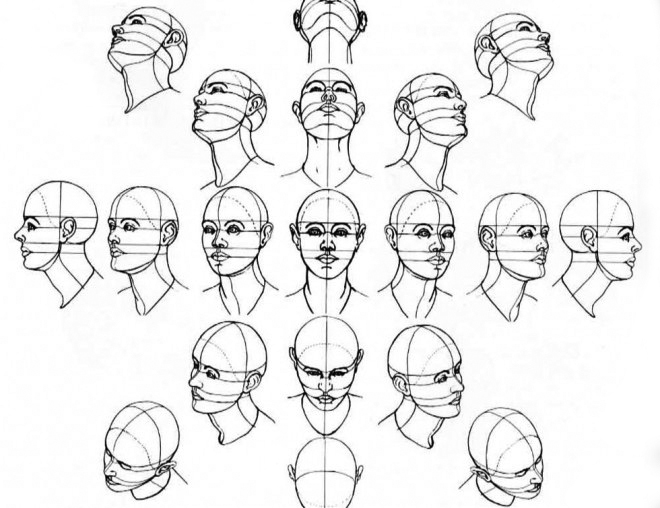
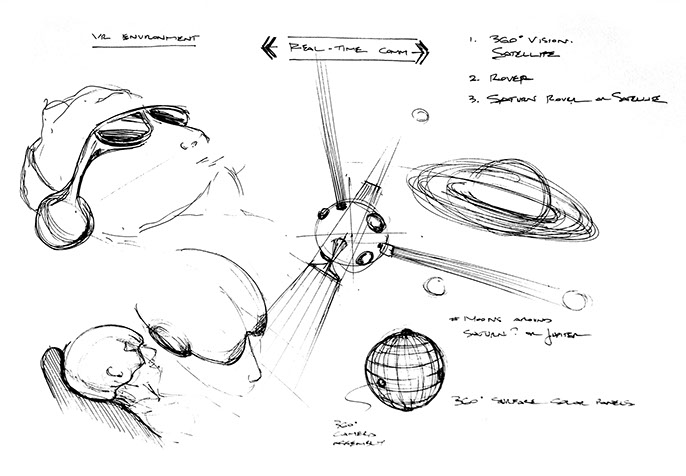
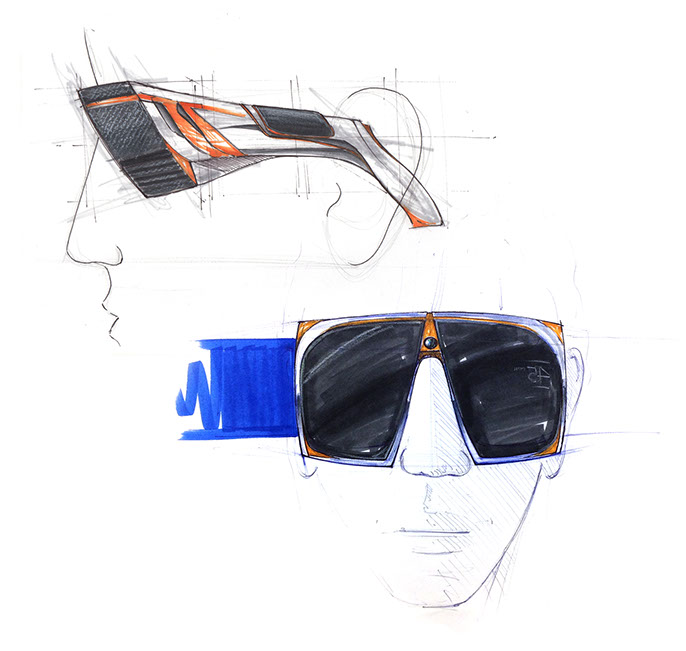
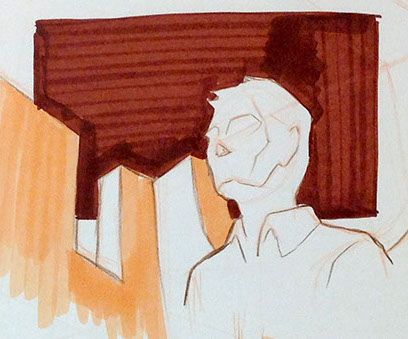
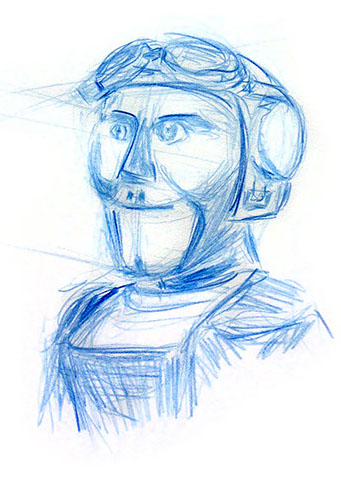
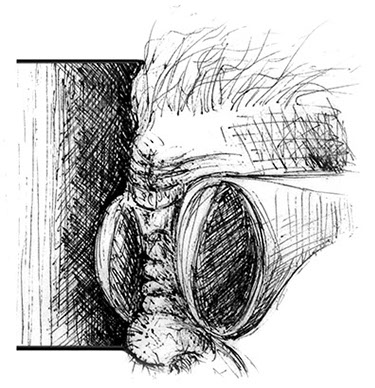
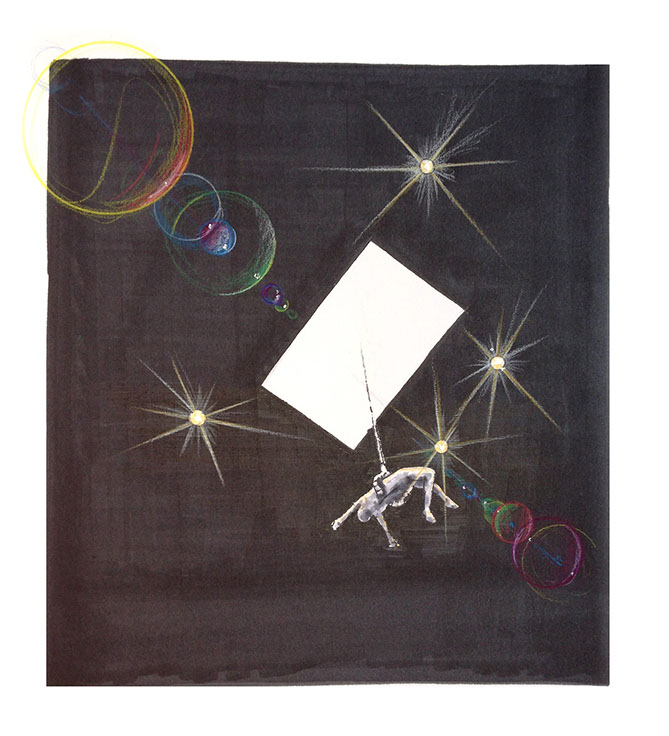
Draw characters from your favorite movies. Left. Scene quickly sketched from The Matrix in pencil, then revisited later adding marker, pencils, and gouache. Below. Character from UP.
LOOSEN UP AND HAVE FUN!
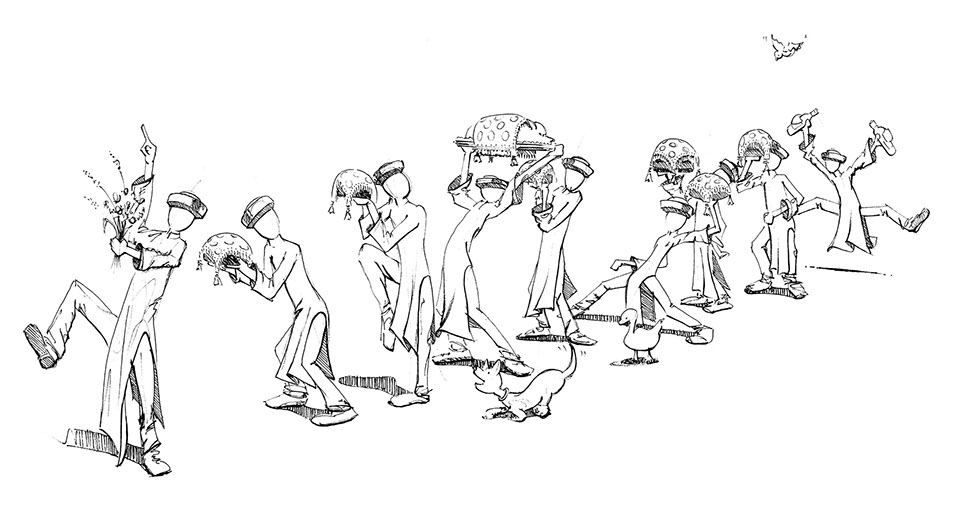
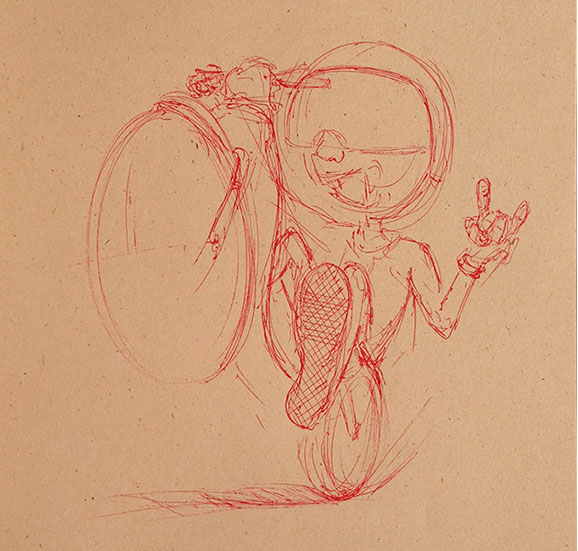
Look, it's just a drawing. If you're not having fun drawing, you're either over-thinking it or taking things way too seriously.
Don't be afraid of your rough work. But, be sure to take the time to follow-up with clean line work for presentation.
Nothing tells as much about
you, the author-artist-designer, as your own original work: It's your voice.
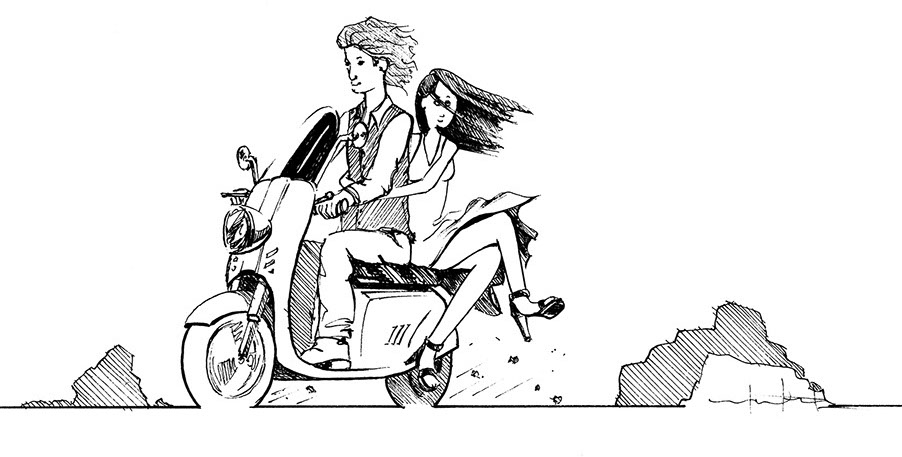
* Estimate only. See instructor and calendar for specific due dates. Summer Session schedule is more compressed with one week equal to approximately two and half semester weeks.
CSULB | COTA | DEPARTMENT OF DESIGN | BIO

Questions, feedback, suggestions?
Email me with your recommendations.
©2020 Michael LaForte / Studio LaForte, All Rights Reserved. This site and all work shown here is purely for educational purposes only. Where ever possible student work has been used or original works by Michael LaForte.
Works by professionals found online or in publication are used as instructional aids in student understanding and growth and is credited everywhere possible.
